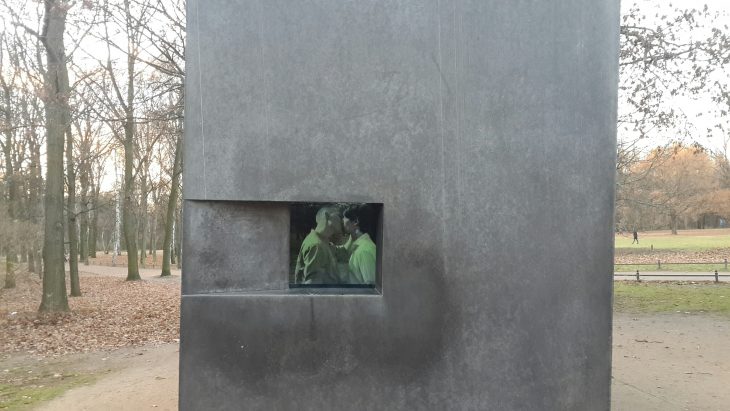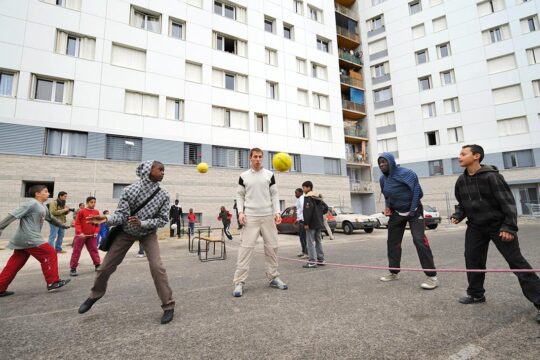“Today, the Shoah is a universal reference,” wrote the historian Tony Judt in 2008. Everywhere in the world the Holocaust has come to stand as the epitome of political evil. And in addition, the German people’s effort to atone for and repudiate their past is often held up as exemplary. The trials of war criminals in post-war Germany, the reparations provided to victims and the memorials erected in their name have become lodestars for what is called ‘transitional justice’ – the contemporary codification of norms and policies aimed at ensuring peace and justice in the aftermath of conflict.
I participated in a seminar organized by the Robert Bosch Stiftung on Truth, Justice and Remembrance in late 2016. During our excursions in Berlin and Nuremberg, I saw that it had taken a very long time for Germans to face their nation’s past and arrive at the recognition that actions carried out in their name were morally indefensible. People instinctively resist attempts to make them repudiate their history and revise their belief systems. If your country has lost a war, your primary instinct is to protect your compatriots and mourn defeat, not atone for the crimes your rulers committed in your name.
For at least a few decades after the war, certain individuals had to swim against the current and force their compatriots to revise their views. The attorney Fritz Bauer, for instance, was ostracized by his colleagues for having pushed for prosecutions of Nazi war criminals. “In the justice system, I live as in exile,” he said. His persistence led to the Frankfurt Auschwitz trials of 1963-65, where 22 Nazi officers were tried for their roles in the abuse and killings of inmates at the Auschwitz-Birkenau concentration camp.
All individual efforts have had a cumulative effect. Perhaps no other country in the world has reviewed a dark chapter of its history more comprehensively than Germany. Although the numerous modes of remembrance may have served different objectives over the years, a set of meanings has gained near unanimous acceptance. By holding up the Nazis as an example of a criminal regime, civic education and memorialization efforts seek to guard against the temptations of authoritarianism. They teach that the rights of the individual are sacrosanct. Under no circumstances can the state be allowed to persecute people for their religion or culture or sacrifice them to an ideology.
For this reason, monuments established by state fiat to legitimize political structures, like those erected by the communist regime in East Germany, now hold very little public resonance. The most evocative memorials in Berlin reject all identification with reasons of state. Many of them were established after Germany’s reunification in 1990. Even those publicly funded are the work of individual artists or citizens’ associations. They are almost always concerned with honoring the individual victim of injustice and celebrating the diversity of human nature and experience.
Take the famed Memorial to the Murdered Jews of Europe. It was designed by the architect Peter Eisenman and unveiled in 2005. From a distance, the memorial appears as a collection of near-identical concrete slabs laid out in a symmetrical pattern on an even field, like tombs in a graveyard. But as you approach and enter the site, you realize that the uniformity of the slabs is an illusion. They rest on irregular, undulating ground. Those resting on higher ground are short, less than a foot in height; those standing on lower ground are colossal and tower over the visitors wandering among them. Each of the 2,711 slabs were individually created and no two slabs are exactly alike. Eisenman has said that the memorial consciously avoids symbolism or any representational significance. Yet the memorial seems to remind us: The murdered Jews of Europe were not a homogenous mass but a people with diverse customs, habits and languages. Each person who was killed was a unique individual.
Across the street, at the edge of the Tiergarten, stands the Memorial to Homosexuals Persecuted Under Nazism – a large concrete cuboid with a window that shows a video clip of two young men kissing and caressing each other. The hard, grey, impenetrable cuboid creates a stark contrast with the tender affection expressed by the men. The couple is heroic in their blithe disregard for the apparatus that surrounds and threatens to crush them.
The most evocative memorials in Berlin resist monumentalism. Their creators recognized that grandiose structures have often idolized brute power, and deliberately chose unobtrusive styles. Walking around the city one often comes across small, inscribed brass plaques among the cobblestones on the pavements. These are stolpersteine, or “stumbling stones”. Each stolperstein bears the name of a person who lived in the neighborhood before being dragged away by the National Socialists. “Here lived Alice Rosenberg,” read a plaque that I encountered, “Born 1911, Deported 1942, Murdered in Auschwitz.” Quietly but constantly the stolpersteins remind the city’s inhabitants that these were the very streets where the Nazis committed their horrors. It is a memorial that they encounter as they go about their daily routine and becomes a part of their everyday consciousness.
For people from countries that have recently emerged from war or mass atrocity, the German case underscores the difficulties that lie in the path to remembrance. Civic education and memorialization on Germany’s scale is only possible in a country that has established a system of government that allows substantial freedoms and enjoys legitimacy, and where society has reached a broad consensus on how to view history. Such conditions are not easy to achieve. In most post-conflict countries, governments remain unrepresentative and are invested in protecting perpetrators and ensuring forgetting rather than remembrance.
But Germany also offers a lesson in hope. It demonstrates how a range of people working at some distance from state power, using different approaches to remembrance and the excavation of historical truth, can help remold the political institutions and worldview of an entire society.
The writer is the author of The Bullet and the Ballot Box: The Story of Nepal’s Maoist Revolution
e
Berlin Seminar: Truth, Justice and Remembrance
JusticeInfo is publishing articles and testimonies from the participants to the Berlin Seminar of the Robert Bosch Stiftung, a partner of our website.
All over the world, societies suffer from traumatic experiences in wars and conflicts. The Berlin Seminar of the Robert Bosch Stiftung brings peace actors from (post-) conflict societies to Germany’s capital to work towards an appropriate approach to addressing violence in their countries. The participants discuss with experts and visit sites of memory. Furthermore, they peer-consult each other and exchange best practices to strengthen their abilities for conflict transformation. The belief is that lasting peace is only possible if the legacy of conflicts is dealt with in an inclusive and constructive manner.
Find more information here





